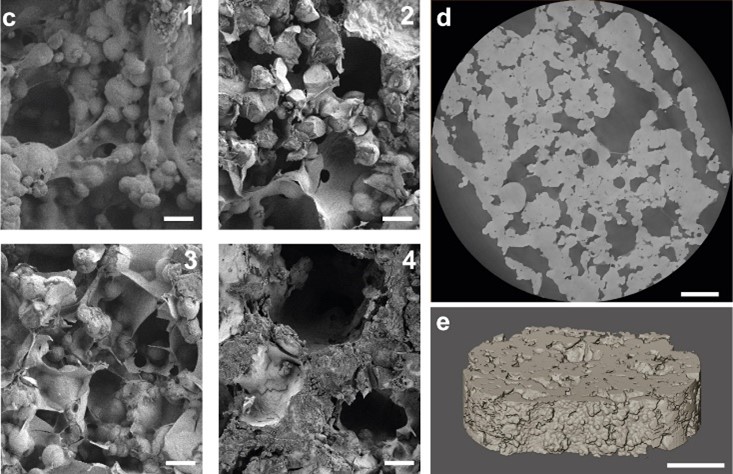
Author(s) : Matteo Hirsch, Lorenzo Lucherini, Ran Zhao, Alexandra Clarà Saracho
Supervisor : Esther Amstad
Journal : Materialstoday
Editor : ELSEVIER
Year of publication: 2023
Nature fabricates organic/inorganic composites under benign conditions, yet, in many cases, their mechanical properties exceed those of the individual building components it is made from. The secret behind the evolutionary pivot is the unique ability of nature to control structure and local composition of its materials. This tight control is often achieved through compartmentalization of the reagents that can be locally released. Inspired by nature, we introduce an energy-efficient process that takes advantage of the compartmentalization to fabricate porous CaCO3-based composites exclusively comprised of nature-derived materials whose compressive strength is similar to that of trabecular bones. The unique combination of nature-derived materials, 3D printability, and good mechanical properties is achieved through the formulation of these materials: We combine microgel-based granular inks that inherently can be 3D printed with the innate potential of engineered living materials to fabricate bacteria-induced biomineral composites. The resulting biomineral composites possess a porous trabecular structure that comprises up to 93 wt% CaCO3 and thereby can withstand pressures up to 3.5 MPa. We envisage this system to have the potential to be used in art restoration, serve as artificial corals to help the regeneration of marine reefs, and, with additional work, might even allow the reparation of broken or partially disintegrated natural mineral-based materials such as certain parts of bones.